If you plan on viewing a solar eclipse, make sure to protect your eyes.
Click on image for full size
Courtesy of the Corel Corporation
The Right Way to View a Solar Eclipse
Solar eclipses are really neat to look at! But you have to be very careful. If you look right at the Sun, it will hurt your eyes! There are lots of ways to protect them.
Take a black piece of paper and put a hole in it. If you hold a white piece of paper behind it, the eclipse will shine down onto the white paper! You can watch it without looking at the Sun.
There are also special glasses that will work. Do not use sunglasses! Look for a special type of glasses made just for eclipses.
Remember, be very careful when looking at an eclipse. It's better to be safe than sorry!
You might also be interested in:
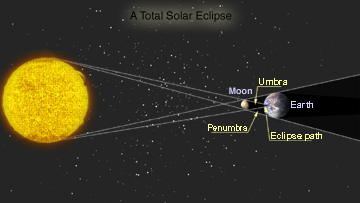
An eclipse of the Sun occurs when the Earth passes through the moon's shadow. A total eclipse of the Sun takes place when the Moon is directly between the Sun and the Earth. When a total eclipse does
...more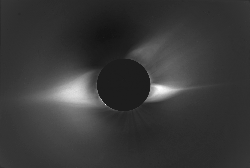
The last solar eclipse of this millennium was on August 11, 1999. Only people in Europe, the Middle East and India could see it. This was a total solar eclipse, which means that the Moon completely blocked
...more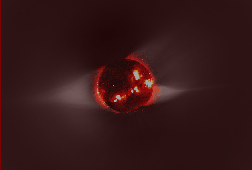
Rising above the Sun's chromosphere , the temperature jumps sharply from a few tens of thousands of kelvins to as much as a few million kelvins in the Sun's outer atmosphere, the solar corona. Understanding
...more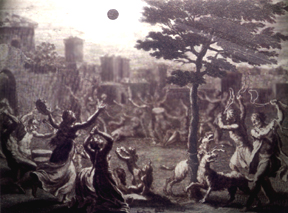
Solar eclipses are really great to watch! But in the past, people were very scared of them. They didn't understand what was going on. Some people thought that a monster or animal was eating the Sun! They
...more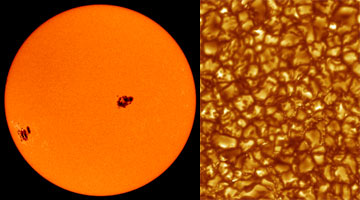
Most of the energy we receive from the Sun is the visible (white) light emitted from the photosphere. The photosphere is one of the coolest regions of the Sun (6000 K), so only a small fraction (0.1%)
...more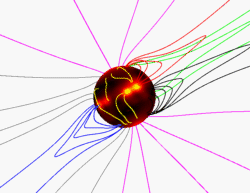
The gas in the solar corona is at very high temperatures (typically 1-2 million kelvins in most regions) so it is almost completely in a plasma state (made up of charged particles, mostly protons and electrons).
...more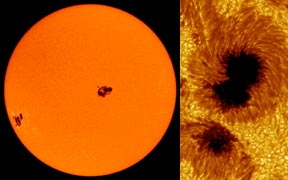
Sunspots are dark spots on the Sun. They may look small, but they are actually as bigas a planet like Earth or Mars! Sunspots are "dark" because they are colder than the areas around them. Of course, they
...more















